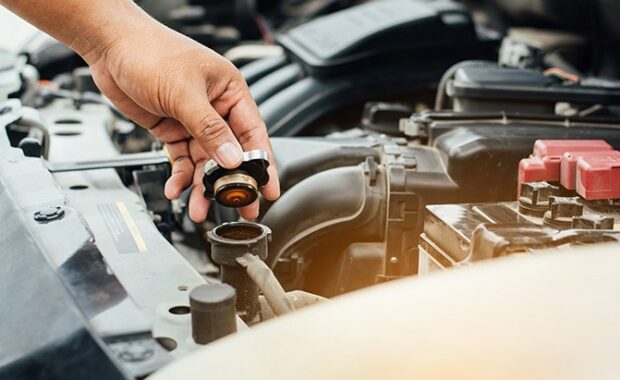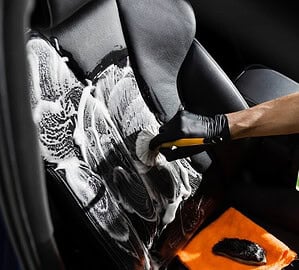Maintaining the health of your car’s radiator is critical to ensuring that your engine doesn’t overheat while driving. Regular maintenance ensures that the mostly aluminium parts of the radiator are protected from corrosion and the flow of the coolant is efficient.
The antifreeze or coolant is responsible for protecting your engine’s aluminium parts from corrosion. In most cars, the coolant or antifreeze is only able to do this job efficiently for two years, before you need to replace it.
The practice of replacing coolant in the radiator is known as flushing car radiators. Besides ensuring the coolant is properly doing its job, a radiator flush also ensures that your radiator is clean and working efficiently.

Here’s how you can go about ‘flushing’ the radiator of your car:
Start With Putting On Safety Gear And Taking Precautions
The coolant of your car is poisonous for humans and thus, in order to handle it, you will need to ensure you are wearing safety goggles and gloves.
At this stage, it is also important to ensure that the engine of your car has cooled down. Flushing the radiator right after you have driven your car is not a good idea. When the engine is warm, the fluids inside the engine will also be warm. In fact, the antifreeze inside your engine will retain its heat long after the engine’s metal parts have cooled down.
As a rule of thumb, you should wait at least 1 hour for the engine and the antifreeze to cool down.
Jack Up Your Car And Find The Drainage Valve Of Your Car’s Radiator
Jacking up your car will help you gain easy access to the drainage valve that is located at the bottom of the radiator.
At this point, it is also a good idea to clean the radiator, especially around the cap. This way, you will be ensuring the no dirt or grime can enter the radiator when you open the cap.
Drain The Radiator Fluids (Including Antifreeze) In A Pan
Before you open the drainage valve, place a pan or bucket under it. Make sure whatever you are using to collect the drained fluid is big enough to hold all of it and is positioned properly.
Now, it is time to open the drainage valve. Keep in mind that the valve might be screwed tightly and you may need to use a socket. Some cars have a special drainage valve that can only be opened using a specialised tool. You can find this tool, known as a petcock socket at most handyman stores.
Once you have collected the drained fluids, you can dispose of them in a toilet flush or down any of the drains of your home. Make sure that you don’t drain the fluid into the ground as it can be toxic and detrimental to the solid and/or plants in that area.
Flush The Radiator With Water
Next, reseal the drainage valve and open the radiator cap at the top of the radiator. Use a hose to fill the radiator with water.
After this, close the radiator cap and put your vehicle into ignition and leave the engine running for 15-20 minutes.
After this, turn the engine off and wait for it to cool. Then, repeat the previous steps to drain the water from the radiator.
Add New Coolant/Antifreeze
In the last step, open the cap of the radiator and start pouring the coolant or antifreeze inside the radiator.
Once again, stay careful about not dropping the antifreeze on the ground.
Conclusion
It is strongly recommended to flush your car’s radiator every two years. Some modern cars come loaded with a variety of coolant that can last up to four years. If you have recently purchased a vehicle, you can refer to the user’s manual to check the right time to flush your car’s radiator.



